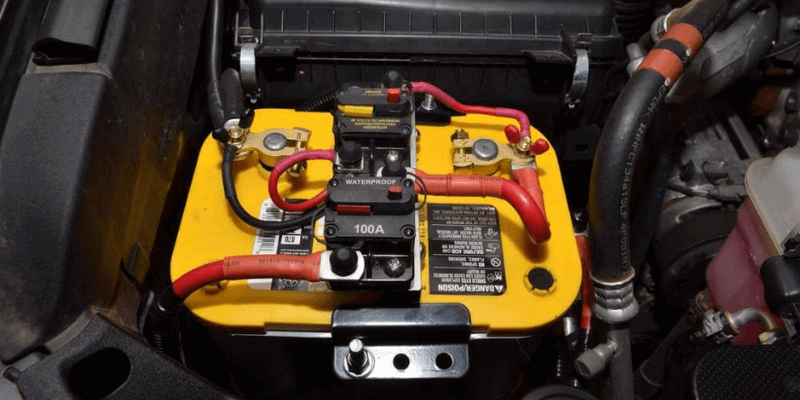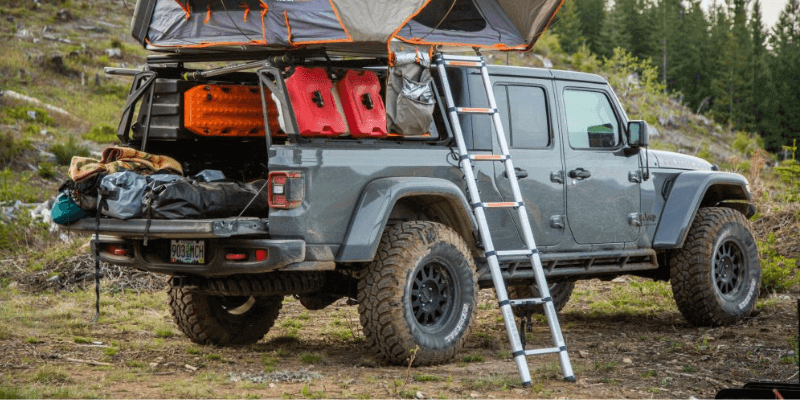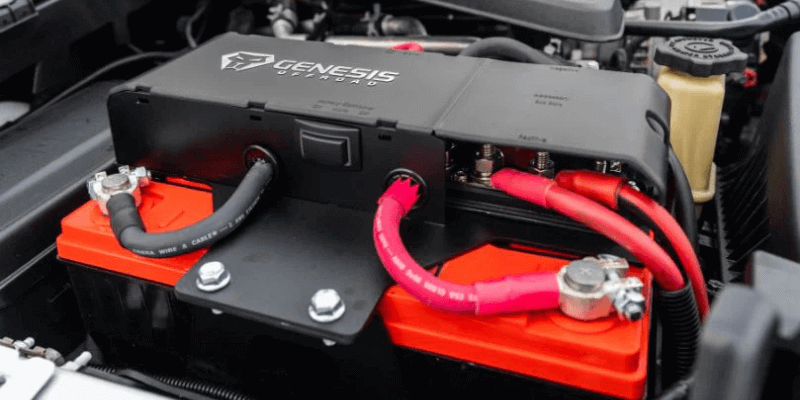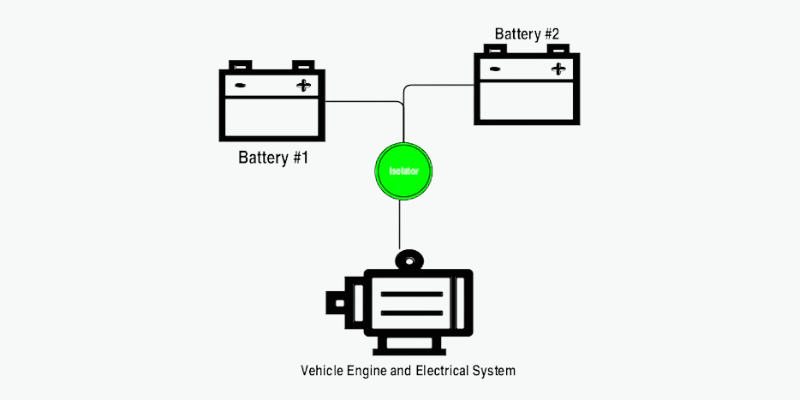Når du utforsker avsidesliggende områder, bør du vurdere et dobbelt batterioppsett for pålitelig kraft i overlandsbiler, båter eller bobil. Å stole utelukkende på motorbatteriet kan være risikabelt når du bruker elektronikk. Denne artikkelen dekker viktig informasjon om doble batterisystemer og oppsett for en robust strømløsning. La oss komme i gang!
Hva er et dobbelt batterioppsett?
Et dobbeltbatterisystem kobler to batterier til et kjøretøys generator, og gir pålitelig kraft til camping og firehjuling.
Den har en isolator som forhindrer at hovedbatteriet slippes ut når kjøretøyet er av og tillater lading når motoren går. Fordelene inkluderer minimalt vedlikehold, vibrasjonsmotstand og fleksible batteri -monteringsalternativer.

Hvordan fungerer det?
For å sette opp et dobbelt batterisystem, er det viktig å forstå dets funksjon.
Dette systemet forbedrer kjøretøyets tilgjengelige strøm ved å koble til to batterier i serie. Det første batteriet starter motoren og driver regelmessige operasjoner, mens det andre batteriet støtter tilbehør som leirlys, bærbare datamaskiner og små kjøleskap. Dette oppsettet hjelper til med å forhindre overforbruk av startbatteriet og blir strandet.
I mange systemer kan du midlertidig "parallelle" koble begge batteriene til å hjelpe deg med å starte hvis startbatteriet er tappet.
En isolator skiller starteren fra sekundærbatteriet, og sikrer at de opererer uavhengig og opprettholder kjøretøyets evne til å starte. Med en passende isolator kan du lade og bruke begge batteriene effektivt.
Trenger du overlandsrigg eller båt doble batterier?
Et dobbelt batterioppsett i overlandsriggen eller båten din er ikke viktig, da motorbatteriet kan være tilstrekkelig. Fordelene med ekstra kraft oppveier imidlertid ulempene.
Å stole bare på startbatteriet begrenser bruken uten å kjøre motoren, ettersom startbatterier er ment for korte høye strømmer og raske ladinger, ikke langvarig bruk eller dyp utslipp. Dette kan forhindre at motoren starter og skader batteriet.
Derfor et dobbelt batterisystem med litiumbatterier anbefales ofte for overlanding og er populær på Liveaboard -seilbåter og yachter.

Trinn for trinn til et oppsett med dobbelt batterisystem
Hvis du installerer et dobbelt batterisystem, følg denne trinn-for-trinn-guiden.
Trinn 1: Velg batteriet
Du kan installere et hvilket som helst sekundært batteri hvis det er rom og et monteringsalternativ. Forsikre deg om at laderen gir riktig kraft.
Mens bly-syre-batterier er vanlige, foretrekkes litiumbatterier på grunn av deres dype utladningskapasitet og hurtiglading. De har også høyere energitetthet, er 55% lettere og kan installeres i lukkede rom siden de ikke lufter giftige gasser.
Trinn 2: Installer isolatoren
En batterisolator leder ladingen til sekundærbatteriet uten å risikere det primære. Den mater strøm fra generatoren til begge batterier, slik at du kan starte bilen din med den sekundære om nødvendig.
Koble den positive terminalen til det primære batteriet til isolatorens positive terminal, og koble deretter negativer deretter. Forsikre deg om at alle tilkoblinger er sikre og jordet; Kontakt en profesjonell hvis du er usikker.
Trinn 3: Sett opp lading
Du kan lade dobbeltbatterisystemet ditt ved hjelp av kjøretøyets generator mens du kjører eller gjennom alternative metoder som solcellepaneler eller generatorer når du er utenfor nettet.
For mer effektivitet med litiumbatterier, bør du vurdere en DC-til-DC-lader som justerer strømstrømmen basert på utladningsdybde; Det kan også fungere med solcellepaneler for ekstra kostnader. Selv om det er dyrere enn en isolator, forbedrer det ytelsen til oppsettet ditt.

Vil doble batterier skade generatoren min?
Å koble flere batterier til en generator uten riktig vurdering kan forårsake betydelig skade, ettersom de fleste generatorer er designet for å bare lade ett blybatteri. Overlading kan føre til overoppheting og smelting av viklingen.
Imidlertid er et dobbelt batterioppsett trygt hvis kablet riktig med en DC til DC -lader eller generatorelader som administrerer ladetilstanden, inkludert spenning, forsterkere og temperatur.
I tillegg kan du vurdere å legge til en generatorregulator for bedre kontroll over lading. Noen velger en andre generator for redundans og pålitelighet i kjøretøyer. Båter med to motorer belaster ofte separate batteribanker fra hver motor; Hvis en generator mislykkes, kan de kåres til å holde startbatterier drevet for sikker hjemkomst.
Trenger jeg en isolator for et annet batteri?
Ja, en isolator for et annet batteri er avgjørende for å holde husbatterisystemet atskilt fra chassisbatteriet. Det forhindrer at ett batterifeil eller avløp påvirker andre, slik at det andre batteriet kan tjene som sikkerhetskopi. Du kan velge mellom en ladekontroller eller et dedikert batterisisolatorrelé basert på dine behov.

